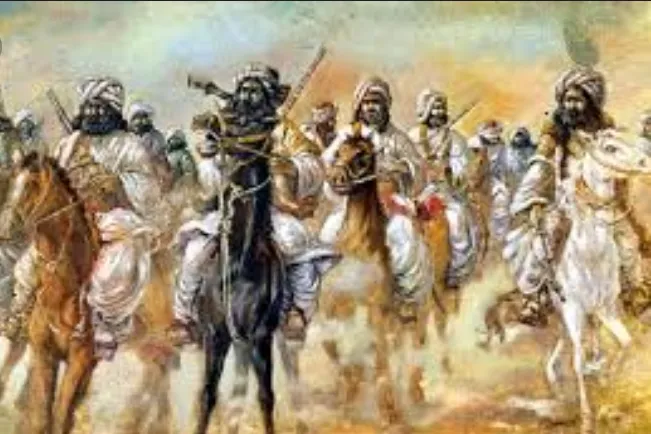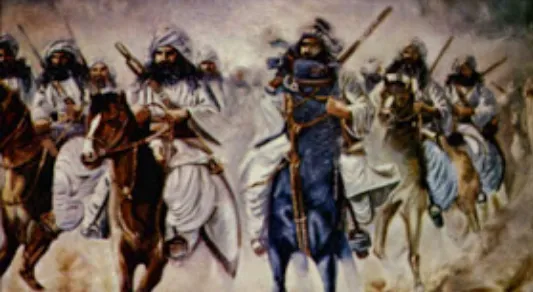
Pakhtuns in Balochistan, was a tirade about absence of self-governance of Pakhtuns of Balochistan. The writer of that article has given an impression, between the lines, that Baloch are in charge of the present predicament of the Pakthuns of Balochistan. Chronicled actualities have been contorted by the creator to demonstrate his point, which should be redressed.

The writer states in the article, "Before the British occupation, the name of Balochistan never existed in history to speak to a geo-physical element." An investigation of history discloses to us that first Baloch alliance was shaped under the initiative of Mir Jalal in twelfth century. In 1666, Khanate of Balochistan appeared which was later renamed Khanate of Kalat because of its capital city Kalat. Inayatullah Baloch, in his book "The Problem of Greater Baluchistan," composes that at its pinnacle, Khanate of Balochistan extended from Kerman in Modern day Iran to Indus River in Pakistan.
Essentially, the creator has made another crazy claim about Quetta by keeping up that British gave over Quetta to Khan of Kalat in 1841, in the repercussions of first Anglo-Afghan war. This claim has no premise in history and it is an unconfirmed claim. Quetta was known as Shaal and it was a piece of Khanate of Kalat amid the rule of Nasir Khan-I and this is very much reported in history books.
In 1839, British attacked Kalat state and gave over Quetta and Mastung to Shah Shujah of Afghanistan. A.B Awan in his book "Baluchistan: Historical and Political Processes" composes that "in 1841 after a short war, an assention was come to amongst British and Kalat state. In that understanding Quetta and Mastung were returned back to Kalat."
The creator has stated that British-Balochistan had 90 for every penny Pakthun populace which is an error. English Balochistan not just included Pakthun territories procured through Gandamak Treaty yet additionally Baloch ranges. Quetta, Noshki, Chagai Tribal territories, Nasirabad, Sibi, Bolan and Marri-Bugti tribal ranges were likewise part of the recent British-Balochistan. Nonappearance of chronicled information about socioeconomics makes it difficult to find out the correct extents of populace yet it is protected to accept that British-Balochistan had break even with Baloch and Pakthun populace, if not Baloch greater part.
Besides, the said article makes the truthfully wrong claim that Quetta division amid One-Unit had a Pakthun dominant part populace. Be that as it may, the consequences of 1962 and 1966 general races for National Assembly of Pakistan, held through essential democrats framework, negate this claim. In 1962 decisions, Nawab Khair Bakhsh Marri was chosen Member of National Assembly (MNA) from Quetta division. In 1966, there were two discretionary voting public for Quetta division and both were won by Baloch hopefuls to be specific; Mir Darya Khan Khoso and Mir Nabi Bakhsh Zehri. So if Quetta division had Pakthun greater part then Baloch legislators would have never won from that point.
The present course of action of Balochistan is something that Baloch pioneers didn't need either. President Yahya Khan chose to amalgamate Pakthun belt of British-Balochistan with Kalat state to shape Balochistan area. Baloch pioneers under the initiative of Khan of Kalat asked for Yahya Khan to exclude Pakthun regions in Balochistan. Yahya Khan, in any case, dismissed their request and continued with his plan of territories. In this way, it has never been the want of Baloch to have a region with Pakthun locale in the north. That is the reason that today no Baloch patriot contradicts the request of a different area for Pakthuns of Balochistan.
Redrawing the outskirts of Balochistan can be completed by either building up a different region for Pakthuns in Balochistan or amalgamating it with Khyber Pakhtunkhwa (KP). A different region is monetarily not practical because of its size and little populace. Amalgamation with KP postures political and geographic difficulties.
Politically the general population of Pakthun belt of Balochistan will be at misfortune as they will have less level of seats in commonplace get together of KP, when contrasted with what they have in Balochistan Assembly. Geographic test is that FATA and Frontier Region are arranged between Pakthun belt of Balochistan and KP which additionally confuses the issue.
It ought to likewise not be overlooked that all the significant normal assets of the Balochistan are arranged in Baloch regions. Sui gas fields, Rekodiq goldmines, Saindak copper-gold mines and beach front belt, these are arranged in Baloch regions. It is because of the common assets of Baloch belt that offer of Balochistan in National Finance commission (NFC) has expanded and Pakthun belt is likewise profiting by it.
By and by, Pakthuns have politically and financially more noteworthy control on Balochistan when contrasted with their populace. Doubtlessly, with the exception of one, every central pastor of Balochistan have been Baloch. Nonetheless, it is additionally obvious that all Baloch CMs have constantly required the help of their Pakthun coalition accomplices. Indeed, even today the Balochistan government is similarly shared by Baloch and Pakthun patriots. Accordingly, guaranteeing that Pakthuns are not getting their due offer in commonplace setup is only a wrong line of contention which is additionally sought after by a noteworthy political gathering of Balochistan.
Balochistan right now is confronting many difficulties fit as a fiddle of absence of common self-sufficiency and control on the characteristic assets of the region. The solidarity of Baloch and Pakthuns of Balochistan is the need of great importance keeping in mind the end goal to deal viably with Islamabad. Faulting the Baloch will do no great to either Baloch or Pakthun cause.